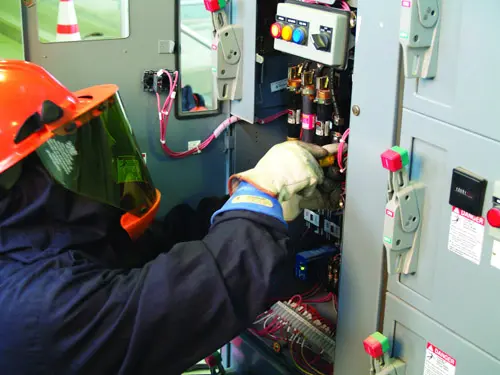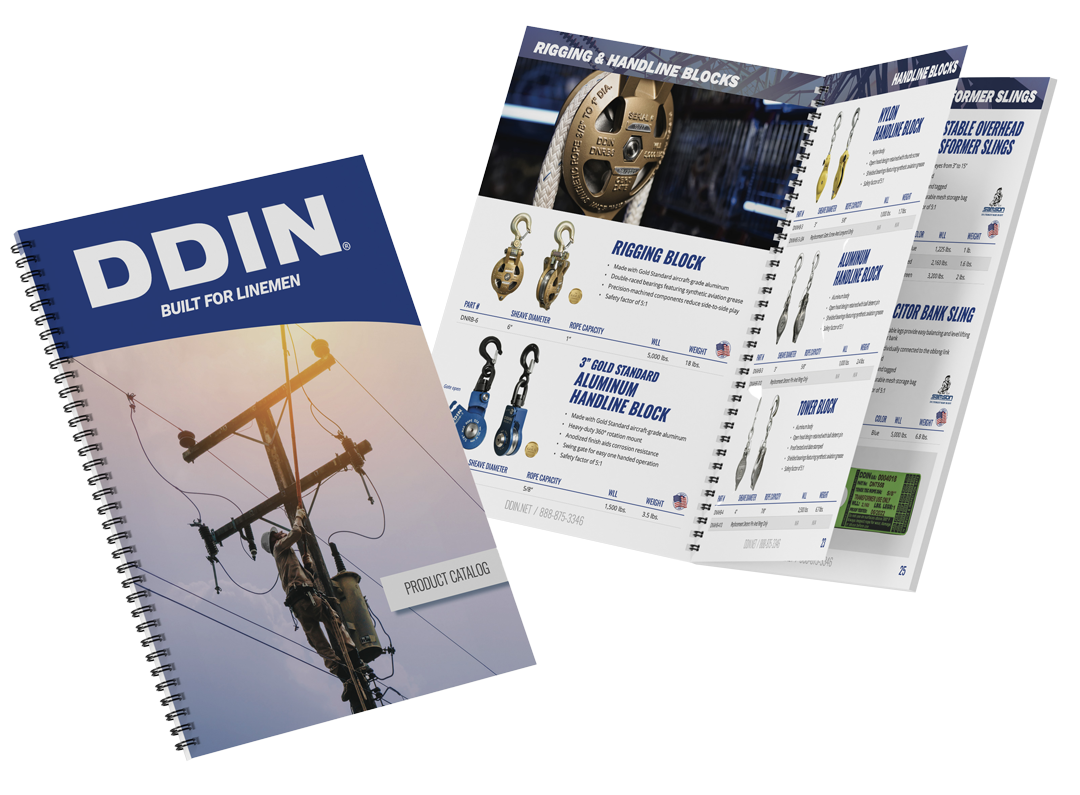Fleet Management

Telematics Systems Streamline Utilities Fleet Management
Telematics system integrates GNSS/GPS, IoT sensors, CAN bus, and 4G/5G modems for real-time vehicle telemetry, diagnostics, and fleet management, leveraging embedded TCUs, edge analytics, and secure cloud connectivity for electrical systems monitoring.
What Is a Telematics System?
An embedded platform combining GNSS, sensors, and modems to acquire, process, and transmit vehicle electrical data.
✅ Interfaces: CAN, LIN, OBD-II, RS-485 for ECU diagnostics
✅ GNSS, IMU, sensor fusion for precise tracking and telemetry
✅ Secure 4G/5G, Wi-Fi, MQTT/HTTP to cloud; OTA and encryption
Telematics refers to the transfer of data/information via telecommunications which is now a common term used by the utilities sector generally referred to as Vehicle Telematics and plays a major role in utilities fleet management system. It is typically an in-house utilities function, integrating vehicle technology, road safety, road transportation data/telecommunications with information and telecommunication technology. It is the technology of sending and receiving and storing information related fleet vehicles via telecommunication devices. Telematics refers specifically to GPS vehicle tracking. In many utilities contexts, telematics data aligns with smart grid principles to enhance situational awareness across fleets.
The main goal of a fleet management telematics system is to streamline and simplify the process of tracking and maintaining utilities fleet. Fleet managers can track the location of their equipment, monitor its progress and ultimately determine any action to be taken. For example fleet managers focused on fuel consumption can easily monitor, evaluate and make real time maintenance, process behaviour or route decisions. By pairing location and engine diagnostics with advanced data analytics, managers can forecast issues and optimize routes more confidently.
For a sector-wide perspective on tools, case studies, and adoption trends, explore the fleet management spotlight to benchmark practices against industry leaders.
The association of Equipment Management Professional (AEMP) drafted a Telematics Data Standard: At the time of this writing, the AEM/AEMP Draft Telematics API (Application Programming Interface) Standard, Version 2.0, is now available. http://www.aemp.org/aemaemp-telematics-standard/
A standards-based approach is strengthened by understanding transmission methods in industrial networks that underpin reliable telematics data exchange.
Telematics can involve any of the following:
- The technology of sending, receiving and storing data/information via telecommunication devices and in parallel affecting various controls on remote objects.
- The integrated use of telecommunications and data for control of vehicles on the move.
- Global Navigation Satellite System technology integrated with computers and mobile communications technology in automotive navigation systems.
When integrated with facility operations, telematics insights can interoperate with energy management systems to coordinate demand and load profiles effectively.
Benefits of Fleet Management Telematics:
- Increased productivity
- Controlled fuel cost
- Improved customer service
- Increased fleet safety & security
- Reduced operating expenses
- Reduced unauthorized vehicle use
These outcomes also support broader utility goals in strategic energy management by turning fleet data into actionable efficiency programs.
By sharing verified usage and schedule data with building energy management systems, organizations can align vehicle operations with facility energy plans and peak avoidance strategies.
Related Articles
Download Our FREE Smart Grid Handbook
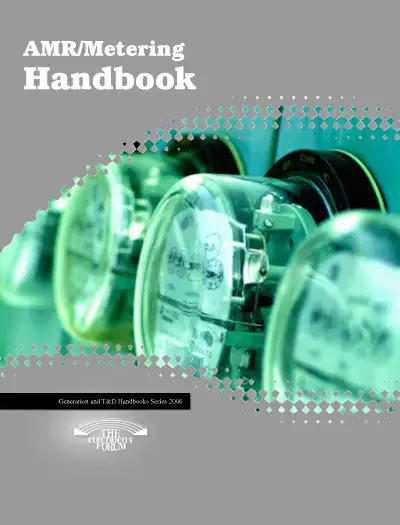
Automatic Meter Reading - Handbook, Vol. 1
Automatic Meter Reading technological advances in AMR has jumped by leaps and bounds in the last decade. The handbook not only explains the technology and theory behind such metering, but how it can be implemented for utility customers across the country.
In Volume 1, we explore the core concepts of AMR, including its components, infrastructure, and communication methods. We cover the key technologies that enable remote data collection and monitoring, from wired to wireless solutions, and examine the advantages of AMR over traditional manual meter reading techniques. This handbook also provides a deep dive into the design, installation, and operation of AMR systems, addressing practical considerations such as system integration, data security, and cost-effective implementation.
This edition is designed for utility professionals, engineers, and technicians involved in the deployment, management, and maintenance of AMR systems. It offers insights into overcoming common challenges, improving system accuracy, and optimizing data collection processes. Additionally, Volume 1 provides an overview of the evolving regulatory landscape and the growing trend of smart grid integration, which is transforming how utilities manage and utilize meter data.
Whether you're working in energy, water, or gas utilities, or involved in the development of new AMR solutions, Automatic Meter Reading Handbook, Volume 1 is an indispensable guide for understanding the future of automated data collection and its critical role in modern utility management. We trust that this volume will provide you with the tools, knowledge, and strategies necessary to optimize AMR systems and enhance the efficiency of your operations.
Latest Fleet Management Articles

Fleet Management Spotlight
Fleet Management Spotlight explores telematics, route optimization, IoT sensors, predictive maintenance, power electronics, EV charging infrastructure, and energy management to optimize uptime, safety, and efficiency in electrically driven fleet operations.
What Is Fleet Management Spotlight?
An engineering brief on data-driven fleet control, telematics, power systems for efficient electrified operations.
✅ Telematics, CAN bus, and IoT sensors for real-time diagnostics
✅ Power electronics for EV charging, load balancing, and grid interaction
✅ Predictive maintenance via vibration, thermal, and battery analytics
6 Tips To Gear Up For WinterWinter is coming and it's time to prepare your fleet for the first blast of icy weather. There are a lot of things fleet managers can do to keep their drivers safe and their vehicles running all season long. In addition to traditional preparation, there is a growing number of high-tech solutions on the market that can help ensure a safe and prosperous winter. Here are six tips for winter readiness.
- Vehicle maintenance. Make sure your vehicles are equipped with fresh winter tires and that they're properly inflated. Make sure that your fluids are topped up and that the vehicle's heating and window defrost systems are working properly. Consider switching to winterized fuel once the temperature drops. As part of a proactive service plan, reviewing a concise overview of preventive maintenance principles can help you schedule inspections before the first freeze.
- Emergency kits. Do your vehicles contain blankets, water, road flares, fire extinguishers and jumper cables? These essential items can help keep your drivers safe and as comfortable as possible if they're sidelined by inclement weather. In addition to supplies, reminding drivers of fundamental electrical safety tips helps them handle batteries, jump-starts, and portable heaters more confidently.
- Mobile communications. Make sure your drivers are equipped with current Smartphones and reliable cellular connectivity. It's absolutely vital that you can reach your drivers at all times, especially during really bad weather. What's more, today's top Smartphones will allow your drivers to use safety apps. Pairing smartphones with a modern fleet telematics system gives dispatch real-time visibility and two-way alerts during storms.
- Mobile apps. There are a number of mobile apps available that provide convenience and safety benefits. For example, Copilot Truck provides voice-guided GPS that directs drivers along the best trucking routes. It considers vehicle size and weight along with load type when selecting routes. This can be really handy if the weather is bad and drivers need to make unscheduled route changes. Route-planning tools that ingest roadway data and smart level-crossing information can also reduce delays and risks near rail lines in heavy snow.
- Remote sensor technology. Companies like Seattle-based Zonar are changing the industry by equipping entire vehicles with remote sensors that can provide drivers and managers with both GPS tracking and data on driving performance, maintenance reports, and more. Remote sensors can provide real-time alerts when vehicles are experiencing mechanical difficulties?alerts which can be critical when driving conditions are poor. To turn sensor data into action, brief supervisors with targeted preventive maintenance training so they can interpret alerts and prioritize repairs effectively.
- Driver scorecards. Remote sensors also enable companies like Actsoft to record driving performance data, such as speed and braking habits, and formulate it into driver scorecards, which can be evaluated by fleet managers and drivers alike. They can help determine whether drivers have habits that are unsafe in winter conditions, such as sudden braking. Drivers can then make improvements that will help keep them safe. Many high-hazard industries, including utility field work guided by linemen safety best practices use similar scorecards to reinforce safe habits in adverse conditions.
There's a lot to think about when it comes to winter prep, but these solutions will go a long way in ensuring you have a safe and profitable season. Modern conveniences like GPS tracking let you know where your drivers are, so you can find them if they're in trouble. It also lets you plan routes more efficiently. More and more, fleet managers are fully equipping their vehicles with sensors for the ultimate in performance management and safety. If you haven't adopted these high-tech solutions yet, maybe it's time for an overhaul. Coordinating with local utilities on scheduled electrical substation maintenance can also inform fueling, charging, and depot operations during extreme cold.
Related Articles
Fleet Management Media
Fleet Management Articles From ET Magazine
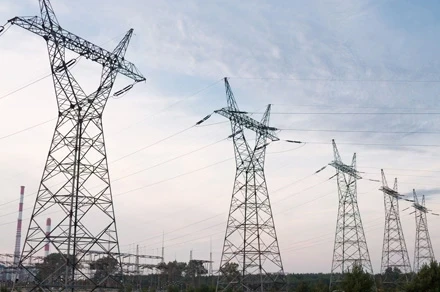
Why Net-Zero is Cheaper for the UK
The United Kingdom has set an ambitious target to achieve net-zero greenhouse gas emissions by 2050. This goal necessitates a comprehensive transformation of various sectors, including energy, transportation, and agriculture. While the environmental imperatives are clear, there is growing evidence that this transition could also yield significant economic advantages for the nation.
Energy Sector Transformation
A pivotal component of the UK's net-zero strategy involves a substantial shift towards renewable energy sources. By 2040, projections suggest that wind and solar power will supply approximately 80% of the country's electricity needs. This transition is expected to reduce energy imports, enhancing national energy security and potentially lowering energy costs for consumers.
The adoption of technologies such as heat pumps for home heating is another crucial step. Heat pumps, which extract heat from the environment to warm homes, offer efficiencies of up to 400%. Their widespread adoption could lead to reduced reliance on fossil fuels and lower household energy bills.
Transportation Sector Overhaul
The automotive landscape is also undergoing significant changes. The Climate Change Committee (CCC) recommends that by 2040, 80% of cars on UK roads should be fully electric. This shift would decrease the demand for imported oil, enhance air quality, and align with global trends towards sustainable transportation.
Agricultural Adjustments
Agriculture plays a role in the nation's carbon footprint, particularly concerning meat consumption. The CCC advises that reducing meat consumption by approximately 260 grams per week per person could significantly lower emissions. This dietary shift would not only contribute to climate goals but also improve public health outcomes.
Economic Growth and Job Creation
The transition to a low-carbon economy is poised to stimulate economic growth through job creation and innovation. Investments in renewable energy infrastructure, such as solar panels and wind turbines, are expected to generate employment opportunities across various regions. For instance, in 2024, the installation of certified heat pumps, solar panels, and battery storage systems reached a record high, indicating a burgeoning green jobs sector.
Moreover, enhancing building insulation and adopting energy-efficient technologies can lead to substantial energy savings. These improvements not only reduce carbon emissions but also lower heating costs for households, thereby increasing disposable income and economic well-being.
Health and Social Benefits
Beyond economic and environmental gains, the net-zero transition offers significant health benefits. Upgrading homes with advanced insulation and modern heating systems can improve indoor air quality, reducing respiratory ailments and other health issues. Additionally, promoting active transportation methods, such as walking and cycling, can lead to healthier lifestyles and reduced public health expenditures.
Ensuring a Just Transition
To maintain public support for net-zero initiatives, it is crucial to distribute the costs and benefits equitably. Government policies should focus on making green technologies accessible and affordable, particularly for lower-income households. This approach ensures that the transition does not disproportionately burden vulnerable communities and that the economic benefits are widely shared.
Achieving net-zero emissions by 2050 presents both challenges and opportunities for the UK. The transition to renewable energy, sustainable transportation, and dietary changes offers the potential for economic growth, job creation, and improved public health. By implementing inclusive and forward-thinking policies, the UK can lead the way in demonstrating that environmental sustainability and economic prosperity are not mutually exclusive but mutually reinforcing

New York's Path to 8.5 GW of Grid Flexibility by 2040
New York State's transition to a clean, zero-emissions energy grid could include up to 8.5 gigawatts (GW) of grid flexibility by 2040, according to a new report from the Brattle Group. This projection, while contingent on achieving ambitious decarbonization goals, illustrates how the state could harness a variety of advanced technologies to meet its clean energy objectives while managing peak demand and lowering grid costs. New York's goal of achieving a fully zero-emissions power sector by 2040, coupled with the electrification of several key sectors, offers a potential pathway to significant grid flexibility and cost savings.
The concept of "grid flexibility" refers to the ability of the grid to adapt to fluctuations in demand or supply, helping to integrate renewable energy sources, manage peak loads, and ensure grid stability. This flexibility is especially important as New York shifts away from fossil fuels and aims to incorporate more intermittent renewable energy sources like wind and solar power. The key to unlocking this flexibility lies in technologies that allow for dynamic, real-time responses to electricity demand, thereby reducing strain on the grid.
The Role of Electrification in Achieving Flexibility
The Brattle Group’s report emphasizes how electrifying key sectors, particularly transportation and heating, can drive grid flexibility. The study predicts that by 2040, New York could see 60% of its heating systems electrified, alongside over 6 million electric vehicles (EVs) on the road. In addition, over 2 GW of behind-the-meter storage—such as residential and commercial batteries—could be deployed across the state, contributing further to grid flexibility.
Electric vehicles play a particularly important role in enhancing grid flexibility. Through vehicle-to-grid (V2G) technology, EVs can not only consume electricity but also return it to the grid during times of peak demand. This "demand-side" flexibility could help balance fluctuations caused by renewable energy generation, particularly on days when wind and solar output is lower than expected.
Similarly, the deployment of heat pumps is expected to play a crucial role in decarbonizing the heating sector. Heat pumps, which are more efficient than traditional heating methods, can be easily integrated with renewable electricity. By using electricity to either heat or cool buildings, heat pumps can provide significant energy savings and, if coordinated smartly, contribute to grid flexibility.
On top of this, residential and commercial energy storage systems are gaining traction in New York. With the right incentives and regulatory support, these distributed energy resources can store surplus renewable power generated during off-peak hours and discharge it when demand is high, thereby stabilizing the grid and reducing reliance on fossil-fueled backup plants.
Brattle Group’s Findings on Potential Flexibility
According to the Brattle Group, these advancements could combine to yield a total of 8.5 GW of grid flexibility by 2040 in a scenario where New York meets its clean energy targets. This figure represents a nearly six-fold increase over the state’s current capacity for grid flexibility, which stands at around 1.4 GW. Achieving this level of flexibility could significantly reduce the cost of maintaining the grid, particularly during peak demand periods.
One of the most intriguing findings in the Brattle report is the potential cost savings associated with increased grid flexibility. The study estimates that, by 2040, the marginal cost of generation could exceed $200 per kilowatt per year if hydrogen turbines were to be used for backup power generation. In contrast, flexible grid resources—such as those powered by electric vehicles, heat pumps, and distributed storage—could offer more affordable alternatives, potentially lowering the cost of managing the grid during high-demand periods.
Brattle’s analysis goes beyond focusing on just one or two technologies. While previous studies, such as those conducted by the New York State Energy Research and Development Authority (NYSERDA) and the PEAK Coalition, have primarily focused on EVs and electric heating, Brattle’s report includes a more comprehensive range of flexible resources. This broader approach provides a more optimistic view of the potential for grid flexibility in New York, suggesting that integrating a mix of technologies can help reduce generation costs and improve grid resilience.
Challenges and Uncertainties
Despite the promising outlook, Brattle acknowledges that there are uncertainties surrounding the actual deployment of these technologies. The flexibility potential outlined in the report depends heavily on the rate at which key technologies, such as electric vehicles, heat pumps, and energy storage, are adopted by consumers and businesses. Delays in the widespread adoption of these technologies could reduce the state’s overall flexibility potential.
Moreover, scaling up these technologies requires overcoming several barriers, including the need for supportive policies, investments in infrastructure, and consumer incentives. A key part of making this vision a reality is ensuring that the necessary regulatory frameworks and market structures are in place to enable these resources to be integrated into the grid efficiently.
New York’s Path to a Clean Energy Future
The transition to a zero-emissions grid and the pursuit of increased grid flexibility is a critical aspect of New York’s broader clean energy strategy. As the state works toward its goal of achieving 100% zero-emissions electricity by 2040, integrating flexible grid resources will be essential to managing the variability inherent in renewable energy sources. These resources not only help maintain grid stability but also offer potential cost savings, helping to make clean energy more affordable for all New Yorkers.
Ultimately, while there are challenges ahead, the Brattle Group’s report illustrates the tremendous potential of grid flexibility in New York’s clean energy future. By leveraging advanced technologies, such as electric vehicles, heat pumps, and energy storage, the state can build a more resilient, cost-effective, and sustainable power grid that supports a fully decarbonized economy. As New York moves closer to its 2040 targets, the findings in this report will likely help guide policymakers, utilities, and consumers in making informed decisions about the future of energy in the state.
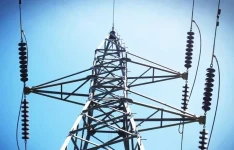
FERC Complaint Targets Duke, PJM Transmission Planning
A coalition of large energy consumers and ratepayer advocates has filed a complaint with the Federal Energy Regulatory Commission (FERC), urging the agency to prohibit transmission owners from independently planning "local" transmission projects exceeding 100 kilovolts (kV). The coalition argues that such local planning, lacking independent oversight, leads to inefficient and costly transmission development, resulting in unjust and unreasonable rates for consumers.
Background
Transmission planning involves determining the necessary infrastructure to transport electricity from generation sources to consumers. In the United States, this planning is typically conducted by transmission owners, which are often investor-owned utilities. These entities are responsible for identifying and implementing transmission projects to meet local reliability needs. However, the coalition contends that this approach can result in projects that are not cost-effective and may not represent the most efficient solutions for consumers.
The Complaint
The coalition's complaint highlights several concerns:
-
Lack of Independent Review: Local transmission projects often undergo minimal independent scrutiny, leading to potential inefficiencies and higher costs.
-
Incentives for Overinvestment: Transmission owners may be motivated to invest in local projects due to the absence of competitive bidding and the limited review provided by FERC's formula rate process.
-
Regional Planning Deficiencies: The current regulatory framework allows local planning exceptions to override regional planning rules, hindering the development of more efficient regional solutions.
The coalition proposes that FERC mandate regional planning conducted by an independent transmission system planner to ensure that transmission projects are both appropriate and beneficial to consumers. They suggest that regional transmission organizations and independent system operators could serve as independent transmission planners if they meet specific criteria.
Industry Response
Larry Gasteiger, executive director of WIRES—a transmission sector advocacy group—expressed concerns about the potential impact of the complaint. He stated that the complaint could burden FERC and all transmission developers with unnecessary and inefficient new processes, diverting resources from ongoing regional transmission planning and compliance with existing FERC orders.
Regulatory Context
This complaint follows recent developments in transmission planning and oversight:
-
FERC's Order 1920-A: In November 2024, FERC revised its Order 1920 on transmission planning and cost allocation to grant state utility regulators a larger role in the decision-making process. The revised rule requires transmission providers to include state input on the development of future scenarios used in long-term regional transmission planning.
-
FERC's Rejection of PJM's Proposal: In December 2024, FERC rejected proposals that would have given PJM Interconnection transmission owners more control over the grid operator’s transmission planning process. The commission expressed concerns about the potential for undue influence by a single stakeholder group, specifically the PJM transmission owners, over transmission planning and expansion.
Implications
The coalition's complaint underscores ongoing debates about the effectiveness and fairness of transmission planning processes. Proponents of independent planning argue that it can lead to more efficient and cost-effective transmission solutions, ultimately benefiting consumers. Opponents, however, caution that such changes could introduce new complexities and delays into the transmission development process.
As FERC reviews the complaint, stakeholders across the energy sector will be closely monitoring the potential implications for transmission planning and the broader regulatory landscape.
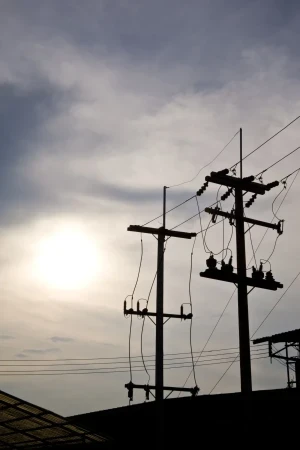
FERC Rejects PJM Transmission Planning Change
The Federal Energy Regulatory Commission (FERC) has rejected a proposal from PJM Interconnection, one of the United States' largest regional transmission organizations, to alter its transmission planning protocol. The decision represents a significant victory for state regulators who had expressed strong opposition to the changes, arguing that they would undermine states' authority in shaping the future of energy infrastructure.
The Proposed Changes
PJM’s proposal aimed to adjust its approach to regional transmission planning, focusing on projects addressing emerging reliability and economic challenges. This initiative was part of its effort to modernize the grid, integrate renewable energy sources, and ensure long-term system reliability.
Key features of the proposal included:
-
Centralization of Decision-Making: Shifting more authority for project selection and prioritization from state regulators to PJM’s internal planning process.
-
Expanded Criteria: Introducing new evaluation criteria for determining the necessity of transmission projects, emphasizing regional benefits over state-specific considerations.
-
Cost Allocation Adjustments: Modifying how project costs are shared among stakeholders, potentially increasing the financial burden on states without direct proportional benefits.
State Regulators’ Concerns
State regulators and stakeholders voiced significant concerns about the proposal, claiming it could weaken states' autonomy in shaping energy policies and investments. Their objections centered on:
-
Erosion of State Authority: States feared the changes would marginalize their role in approving transmission projects and determining their alignment with local policy goals, such as renewable energy targets.
-
Financial Impacts: There was apprehension about the proposed cost allocation method, which could disproportionately affect states with minimal direct benefits from certain regional projects.
-
Transparency and Accountability: Critics argued that the proposed framework lacked sufficient oversight mechanisms, leaving states with limited recourse to challenge decisions.
FERC’s Rationale for Rejection
In its decision, FERC concluded that the proposed changes did not adequately balance regional coordination with state sovereignty. The commission underscored the importance of preserving the collaborative nature of transmission planning, which allows states to play a critical role in determining their energy future.
Specifically, FERC found:
-
Insufficient Justification: PJM failed to demonstrate that the existing planning process was insufficient to address emerging challenges.
-
Overreach: The proposal risked undermining states’ ability to tailor energy strategies to their unique policy objectives and economic conditions.
-
Potential Inequities: The cost allocation adjustments lacked sufficient safeguards to ensure fairness among stakeholders.
Implications of the Decision
For State Regulators
FERC’s ruling reaffirms the importance of state involvement in transmission planning and validates concerns about the need for equitable and transparent processes. This decision ensures that states retain a voice in approving projects that align with their energy goals, such as decarbonization and the integration of distributed energy resources.
For PJM Interconnection
While this is a setback for PJM, it highlights the challenges of balancing regional planning with state autonomy. PJM will likely need to revise its proposal, addressing state concerns while finding innovative ways to modernize the grid and accommodate increasing renewable energy integration.
For the Energy Sector
The decision underscores the ongoing tension between federal, regional, and state authorities in energy infrastructure planning. As the U.S. transitions to a cleaner energy future, such disputes will likely increase, necessitating a more collaborative approach to address competing interests.
Broader Context
FERC’s decision is part of a larger national debate over how to best plan and pay for the modernization of the electric grid. With growing renewable energy adoption, electrification of sectors like transportation, and the increasing frequency of extreme weather events, the need for a resilient and adaptable grid has never been more urgent.
At the same time, preserving state authority in energy decisions remains vital to accommodating diverse policy goals and economic realities across regions. This ruling highlights the complexity of balancing these competing priorities while advancing national energy objectives.
Looking Ahead
PJM is expected to return to the drawing board and engage more closely with state regulators and stakeholders to develop a revised proposal. The outcome will likely shape the future of transmission planning in the U.S., serving as a benchmark for other regional transmission organizations facing similar challenges.
FERC’s rejection sends a clear message: collaboration and respect for state authority are non-negotiable in the pursuit of a reliable, equitable, and sustainable energy system.
Sign Up for Electricity Forum’s Fleet Management Newsletter
Stay informed with our FREE Fleet Management Newsletter — get the latest news, breakthrough technologies, and expert insights, delivered straight to your inbox.
Electricity Today T&D Magazine Subscribe for FREE

- Timely insights from industry experts
- Practical solutions T&D engineers
- Free access to every issue










